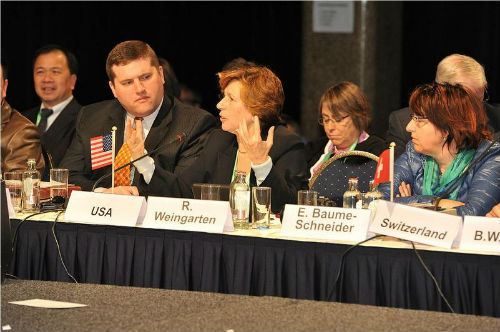
Let’s talk about teaching. Randi Weingarten is the President of the American Federation of Teachers (AFT), which represents educators and healthcare professionals to make sure that fairness and democracy prevails. Her long career as President of the United Federation of Teachers earned her the accolade of being one of the most influential New Yorkers in the New York Observer. Her commitment to education reform and her support for local unions is an inspirational example of what is needed to secure sustainable community solutions for the future of education. In this interview, I talk to Randi about what we can learn from successful education models abroad, the increasing importance of teachers having robust global and cultural competence, and how the US can do a better job supporting its teachers. Her globally informed insights are what we have come to expect from Weingarten, who also writes a monthly column, “What Matters Most,” for the New York Times’ Sunday Review.

Randi, all countries share a common desire to create a high-quality education system that prepares children for success in their lives. You’ve attended the International Summits on the Teaching Profession and done study visits to other nations – what impressed you most from around the world that we might be able to use in the U.S.?
Sitting at the Summit tables these past few years, I have heard the many ways that teachers get more respect in other countries than here in the United States. Teachers are listened to, not just by parents and administrators, but also by policymakers. Their voice matters in decisions that impact them, their students and their schools. This is reinforced by the results of the Teaching and Learning International Survey (TALIS) which show that, in countries where teachers believe their profession is valued, there are higher levels of student achievement.
We know that in schools where teachers are trusted and their voices are valued, learning becomes everyone’s job. The whole staff works together for the success of the entire school. I’ve seen it myself. For example, in Finland, Singapore and Japan, the approach is much different than the top-down, my-way-or-the-highway sanction and blame approach to accountability we see in too many schools in the U.S. If we are going to achieve our goal of a high-quality public education for every child, we need to lean into preparation, practice, and collaboration–not high stakes testing and narrow accountability.
When teachers and school leaders can collaborate on curricula, instructional practice and assessments, it leads to better outcomes. Look at Japan’s lesson study, or teacher sharing in Shanghai. Unfortunately, in too many places in the U.S., policy and practice just don’t support collaboration. Did you know that U.S. teachers were less likely than the TALIS average to report that they ever teach in a team or take part in collaborative professional learning? And that fewer than half of the U.S. teachers surveyed in TALIS had ever observed other teachers’ classes or provide feedback?
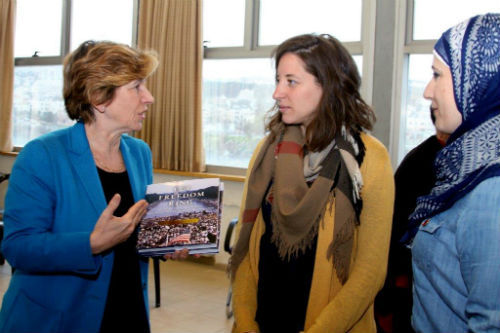
Are our teachers sufficiently equipped to deal with global competencies? What needs to be improved? Are we doing enough to expose our students to other cultures?
Let’s start with what it means to be globally competent, which I believe is the capacity to understand and act on issues of global significance. To do that, students need to build respectful and trusting relationships; work collaboratively; apply knowledge to solve problems; communicate effectively in different contexts; and persist through challenges and setbacks.
In addition, students gain global and cultural competency when they are exposed to people who are different than they are, and to the art, music, history and culture of other nations, races and peoples. But in too many schools in the U.S., over-testing and under-funding are narrowing curricula, as public schools across the country become increasingly re-segregated.
Achieving global competence also requires educators to be culturally competent. Effective teachers know how children learn and grow, they know the academic content they are teaching, AND they know how to teach that content to diverse groups of students using culturally responsive practices. All of that begins in teacher preparation programs which must include a focus on content, an understanding of cultural diversity and a strong clinical experience where prospective teachers can watch experienced teachers in action and practice under their supervision – kind of like a medical residency. We believe that, before getting a classroom of their own, prospective teachers should have the right supports and be able to demonstrate their competence. As we said in our report “Raising the Bar”, too often new teachers are tossed the keys to their classroom and left to sink or swim.
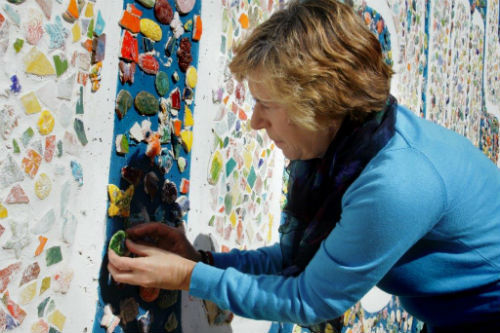
The quality of our schools can only be as good as the quality of our teachers. Are our school systems at a disadvantage vis a vis systems like that of Finland and Singapore? After all, these countries place a huge emphasis on their teaching profession.
The quality of the teaching profession revolves around three things: middle class salaries, working conditions–which, as we know, are learning conditions – and collaboration. Teaching is both art and science; it’s a profession requiring passion, commitment and knowledge. We need to give teachers the time, tools and trust to enable them to do their job well.
In the U.S., we are a long way from truly recognizing teaching as a valued profession. This recognition starts with the compensation and benefits that befit a middle-class professional career. As President Obama recently pointed out, the top 25 hedge fund managers earn more than all kindergarten teachers in U.S. combined! (And, those hedge fund managers pay lower tax rates than these teachers.)
Collective bargaining is the best way to secure better pay, benefits and respect. Throughout our history, unions have helped to create a vibrant middle class, and we need them now more than ever to combat growing inequality. Unions and public sector employment have been central in the efforts of African-Americans, Latinos and other traditionally marginalized groups to gain access to the middle class.
And unions matter for results, too. OECD’s Lessons from PISA for the United States noted, and I want to quote this exactly: “The higher a country is on the world’s education league tables, the more likely that country is working constructively with its unions and treating its teachers as professional partners.”
We also know that teachers in the U.S. are facing increasing stress at work. Recently, the AFT and the Badass Teachers Association created a voluntary survey to begin to understand stress and its health impacts for teachers and other school employees. We received an overwhelming response from nearly 32,000 educators. Some of the results were staggering: Nearly half of respondents are no longer as enthusiastic about their profession as they were when they started. Fewer than half are in jobs that allow them to make a lot of decisions on their own. Only one in five feels respected by government officials or the media. Nearly three-quarters often find their work stressful. And, among the greatest workplace stressors were the adoption of new initiatives without proper training or professional development, mandated curriculum, and standardized tests.
Astonishingly, 45 percent of respondents do not get adequate breaks even to use the restroom. Yet, in spite of all of this, they are not giving up, and just 14 percent said they are very likely to seek employment outside the field of education within the next year. All this reinforces the fact that teaching will always be an essential profession, but there is much more that must be done to make it an attractive and sustainable profession in the U.S. today.
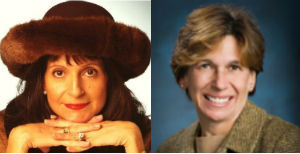
(All photos are courtesy of the AFT)
Join me and globally renowned thought leaders including Sir Michael Barber (UK), Dr. Michael Block (U.S.), Dr. Leon Botstein (U.S.), Professor Clay Christensen (U.S.), Dr. Linda Darling-Hammond (U.S.), Dr. MadhavChavan (India), Professor Michael Fullan (Canada), Professor Howard Gardner (U.S.), Professor Andy Hargreaves (U.S.), Professor Yvonne Hellman (The Netherlands), Professor Kristin Helstad (Norway), Jean Hendrickson (U.S.), Professor Rose Hipkins (New Zealand), Professor Cornelia Hoogland (Canada), Honourable Jeff Johnson (Canada), Mme. Chantal Kaufmann (Belgium), Dr. EijaKauppinen (Finland), State Secretary TapioKosunen (Finland), Professor Dominique Lafontaine (Belgium), Professor Hugh Lauder (UK), Lord Ken Macdonald (UK), Professor Geoff Masters (Australia), Professor Barry McGaw (Australia), Shiv Nadar (India), Professor R. Natarajan (India), Dr. Pak Tee Ng (Singapore), Dr. Denise Pope (US), Sridhar Rajagopalan (India), Dr. Diane Ravitch (U.S.), Richard Wilson Riley (U.S.), Sir Ken Robinson (UK), Professor Pasi Sahlberg (Finland), Professor Manabu Sato (Japan), Andreas Schleicher (PISA, OECD), Dr. Anthony Seldon (UK), Dr. David Shaffer (U.S.), Dr. Kirsten Sivesind (Norway), Chancellor Stephen Spahn (U.S.), Yves Theze (LyceeFrancais U.S.), Professor Charles Ungerleider (Canada), Professor Tony Wagner (U.S.), Sir David Watson (UK), Professor Dylan Wiliam (UK), Dr. Mark Wormald (UK), Professor Theo Wubbels (The Netherlands), Professor Michael Young (UK), and Professor Minxuan Zhang (China) as they explore the big picture education questions that all nations face today.
The Global Search for Education Community Page
C. M. Rubin is the author of two widely read online series for which she received a 2011 Upton Sinclair award, “The Global Search for Education” and “How Will We Read?” She is also the author of three bestselling books, including The Real Alice in Wonderland, is the publisher of CMRubinWorld, and is a Disruptor Foundation Fellow.
Follow C. M. Rubin on Twitter: www.twitter.com/@cmrubinworld


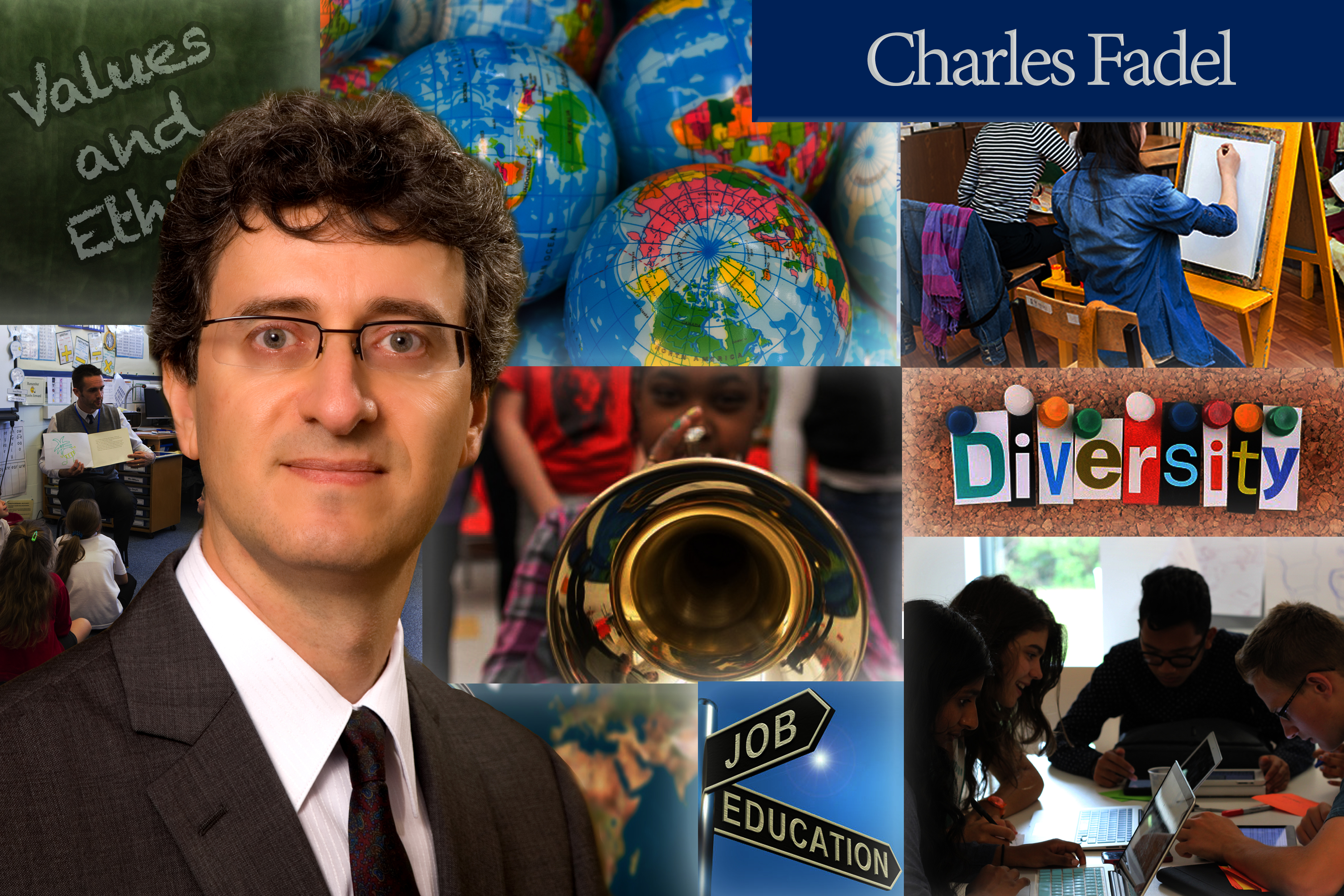
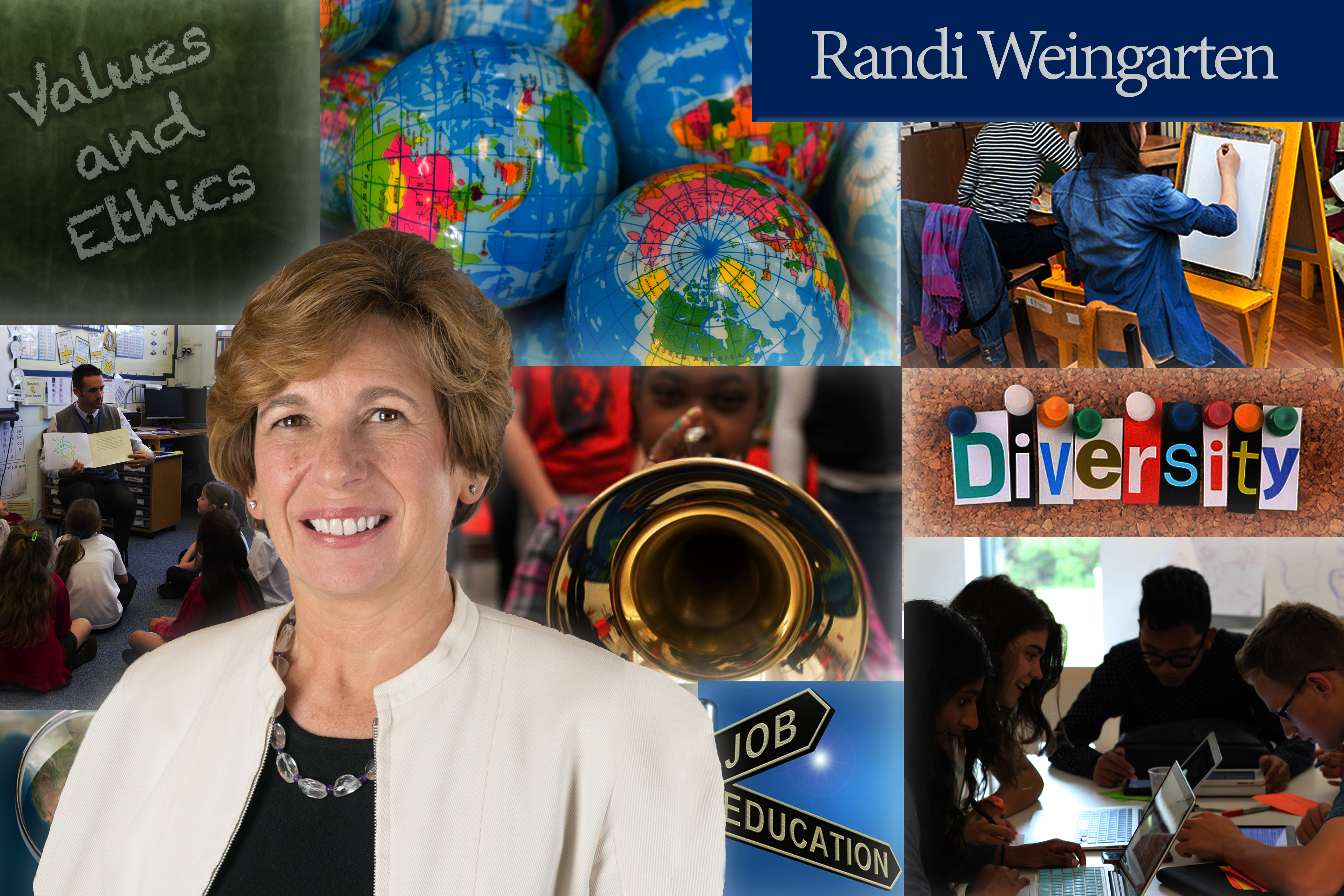
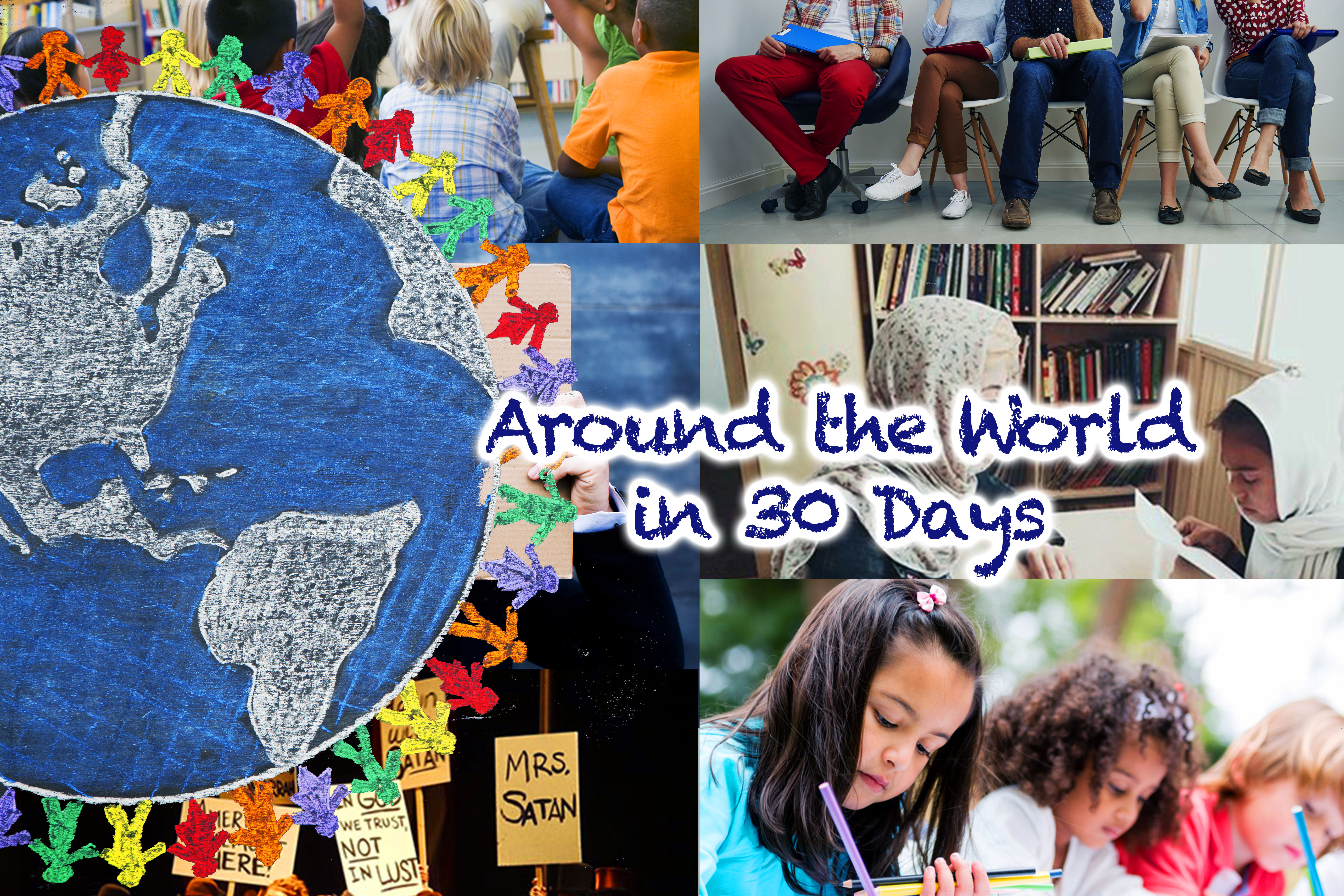

Recent Comments